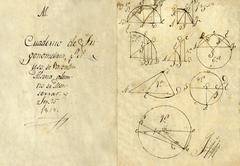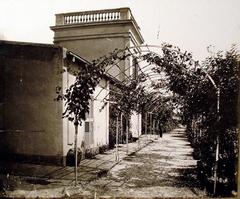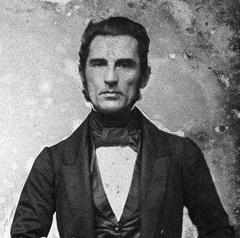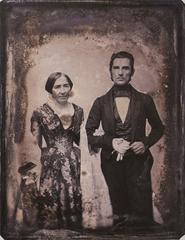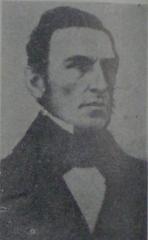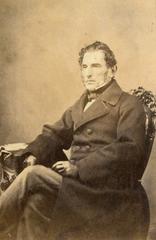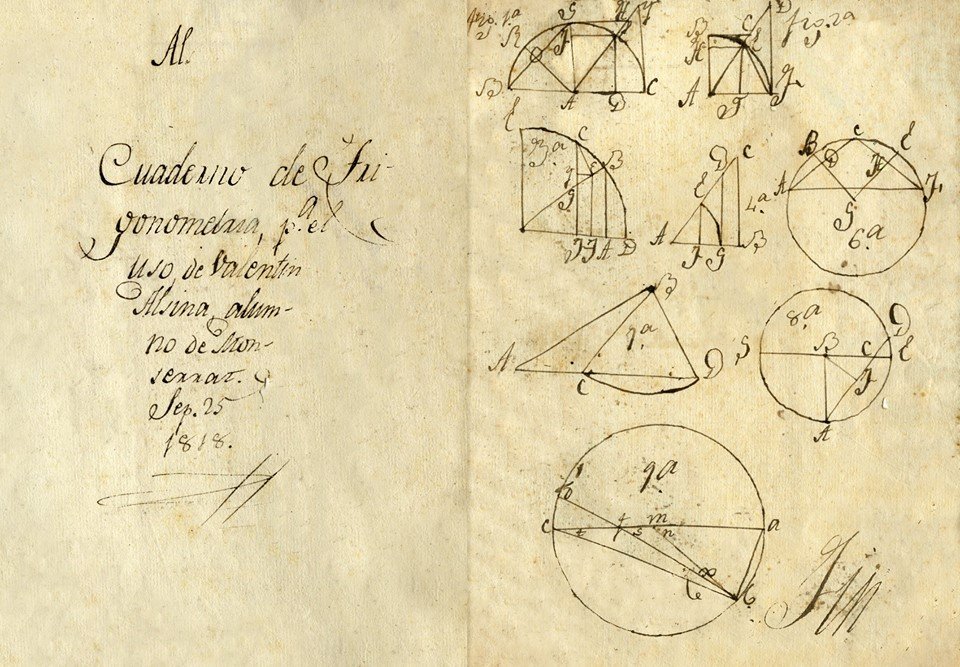
Valentín Alsina, Buenos Aires: Complete Guide to Visiting Hours, Tickets, and Historical Sites
Date: 15/06/2025
Introduction: Discover the Heart of Greater Buenos Aires
Valentín Alsina, nestled in the southern zone of Greater Buenos Aires, is a vibrant city with a rich industrial heritage and a tapestry of cultural influences. Originally a crucial river crossing known as Paso de Burgos, Alsina evolved into a bustling industrial hub, shaped by waves of European immigrants and economic growth in the late 19th and early 20th centuries. Named after the influential Argentine lawyer and politician Valentín Alsina (1802–1869), the city offers visitors an authentic glimpse into Buenos Aires’ social history, architecture, gastronomy, and local traditions.
This guide provides comprehensive insights into Alsina’s origins, architectural jewels like Puente Alsina, and practical information on visiting hours, ticketing, accessibility, and local attractions. Whether you’re an architecture enthusiast, culture-seeker, or traveler looking to immerse in a lesser-known yet dynamic neighborhood, Valentín Alsina promises a memorable experience.
For a deeper dive into the city’s history and culture, refer to the Wikipedia page on Valentín Alsina and the Teatro del Boulevard official website.
Table of Contents
- Early Foundations and Naming
- The Legacy of Valentín Alsina
- Industrialization and Multicultural Growth
- Puente Alsina: Historic and Cultural Icon
- Contemporary Community Life
- Essential Visitor Information
- Cultural Preservation
- Key Historical Dates
- Frequently Asked Questions (FAQ)
- Conclusion & Further Resources
Early Foundations and Naming
Valentín Alsina’s story begins in the mid-19th century as Paso de Burgos, a vital crossing over the Riachuelo River and one of Buenos Aires’ key southern gateways (Wikipedia). Growth accelerated in 1850 with the establishment of one of the region’s first saladeros (meat-salting plants), driving economic and population expansion. The construction of the original Puente Alsina bridge in 1859, named after then-Governor Valentín Alsina, marked a turning point, solidifying the area’s role in regional commerce. The official founding of the town in 1874 further cemented its identity.
The Legacy of Valentín Alsina
Valentín Alsina (1802–1869) was a distinguished lawyer, politician, and two-time governor of Buenos Aires. His advocacy for liberal governance, civic engagement, and resistance to authoritarianism shaped the city’s ethos and continues to inspire local identity today (Encyclopedia).
Industrialization and Multicultural Growth
From the late 1800s through the mid-20th century, Alsina grew into an industrial powerhouse. Its strategic location near the Riachuelo and proximity to Buenos Aires attracted factories, warehouses, and a diverse labor force (Editorial Teseo). Italian, Spanish, and Eastern European immigrants settled here, leaving indelible marks on the city’s social clubs, architecture, markets, and culinary traditions.
Puente Alsina: Historic and Cultural Icon
Puente Alsina, built in 1859 and reconstructed in Art Deco style in 1938, is the city’s most iconic landmark (Buenos Aires Ciudad). The bridge connects Valentín Alsina with the Buenos Aires neighborhood of Nueva Pompeya and has witnessed key historical events. Efforts to rename it were resisted by locals, and in 2002, its original name was officially restored, underscoring its significance as a cultural and historic symbol.
Contemporary Community Life
Today, Valentín Alsina thrives as a community rooted in resilience and cultural pride. Social clubs like Club Atlético Victoriano Arenas and neighborhood associations sustain traditions in sports and recreation. The city’s colorful murals, local festivals, and institutions such as the Teatro del Boulevard highlight its ongoing cultural vibrancy.
Essential Visitor Information
Hours & Tickets
- Puente Alsina: Open 24/7 for pedestrians and vehicles; no entrance fee.
- Teatro del Boulevard: Open Tuesday–Sunday, 3:00 PM–10:00 PM. Tickets typically ARS 500–1500 per event.
- Plaza Constitución: Daily 6:00 AM–10:00 PM; free entry.
- Mercado de Valentín Alsina: Monday–Friday, 7:00 AM–6:00 PM; Saturday, 7:00 AM–2:00 PM; free entry.
- Parroquia San José Obrero: Monday–Saturday, 9:00 AM–7:00 PM; Sunday, 7:00 AM–8:00 PM; donations welcome.
Accessibility
Key public spaces and the bridge are wheelchair accessible, though some historic buildings may have limited access.
Transportation
Valentín Alsina is easily reached via multiple Buenos Aires bus lines (e.g., 32, 85, 112, 165; check TuColectivo) and via Puente Alsina by car or taxi. The Lanús train station connects to central Buenos Aires; a short bus or taxi ride completes the journey.
Best Times to Visit
Spring (September–November) and fall (March–May) offer mild weather and fewer crowds. Local festivals, especially in May (Fiesta de San José Obrero) and during Carnaval, provide immersive cultural experiences.
Nearby Sights & Photographic Spots
- Puente Alsina at sunset: Iconic river and skyline views.
- Murals on Avenida Perón: Colorful depictions of local life.
- Parque Udabe: Green space for families and recreation.
Cultural Preservation
Recent initiatives have prioritized the preservation of Alsina’s architectural and cultural heritage, with Puente Alsina declared a cultural and historical site in 2002 (Wikipedia).
Key Historical Dates
- 1850: Second saladero established.
- 1859: Puente Alsina constructed.
- 1874: Town officially founded.
- 1938: Current bridge structure inaugurated.
- 2002: Puente Alsina name reinstated and protected status granted.
Frequently Asked Questions (FAQ)
Q: What are the main visiting hours for attractions?
A: Puente Alsina is open 24/7; Teatro del Boulevard and other sites generally operate from mid-afternoon to late evening.
Q: Is there an entrance fee for Puente Alsina?
A: No, access is free.
Q: Are guided tours available?
A: Local tour operators and community centers occasionally offer guided walks; inquire at visitor centers or online.
Q: How do I reach Valentín Alsina from Buenos Aires center?
A: Multiple bus lines and taxis provide direct, efficient access via Puente Alsina.
Q: Are attractions family-friendly and accessible?
A: Yes, main sites and parks are suitable for families and generally accessible.
Conclusion: Experience the Authentic Buenos Aires
Valentín Alsina stands as a testament to Argentina’s industrial growth, multicultural heritage, and vibrant local traditions. From the historic Puente Alsina to lively markets and community events, the neighborhood offers a genuine alternative to Buenos Aires’ more commercial districts. Plan your visit during the spring or autumn, soak in the local culture, and enjoy the warmth of this dynamic community.
For more details, download the Audiala app, follow local social media, and consult official resources for up-to-date information on events and guided experiences.
Visuals and Interactive Elements
- Images: Puente Alsina at sunset; Teatro del Boulevard façade; vibrant neighborhood murals; Mercado de Valentín Alsina.
- Map: Interactive map showing landmarks, transport routes, and cultural venues.
- Virtual Tour: 360-degree virtual walkthroughs of Puente Alsina and cultural hotspots (where available).
Further Resources and Official Links
- Valentín Alsina (Lanús) – Wikipedia
- Puente Alsina – Buenos Aires Ciudad
- Historia Hoy – Valentín Alsina
- Teatro del Boulevard
- TuColectivo Bus Info
- Teatro Ensamble
- Sarmiento Library Blog
- PlanetWare Buenos Aires Guide
- Touropia Buenos Aires Attractions
- Worldly Adventurer: Buenos Aires Safety
- Nomadic Matt: Argentina Travel Tips
- Editorial Teseo – De la otra orilla
- Tango Buenos Aires
- Buenos Aires Local Culture and Festivals
